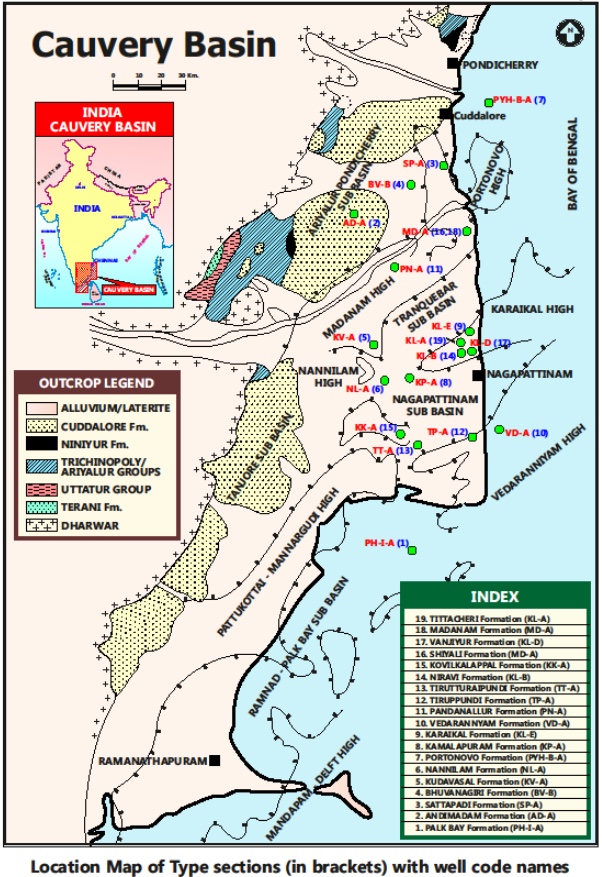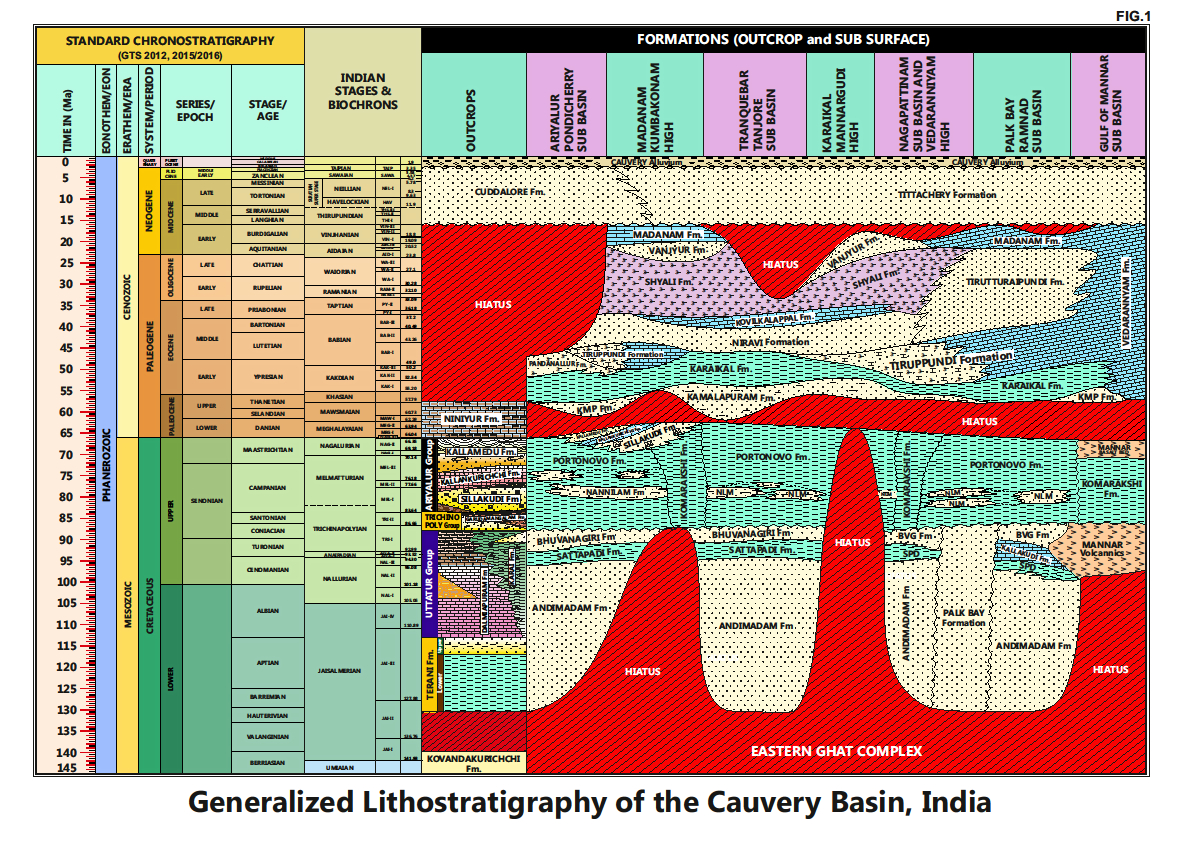Palkbay Fm
Type Locality and Naming
SUBSURFACE: The type section is located at exploratory well PH-I-A, in the Palkbay subbasin (depth interval: 3320-2150 m). Hypostratotype lies in the well Tagattur-A (depth interval: 2590-2010 m). It was named after the Palkbay by ONGC team steered by Venkatarengan et al., (1993) and was issued as Document-VII by KDMIPE, ONGC, Dehradun (1993).
[Figure 1: Type-section Map of Subsurface Formations]
Lithology and Thickness
Sandstone. Dominantly calcareous sandstone with minor claystone bands. Sandstone is pale gray to greenish-gray, hard, compact, medium grained, poorly sorted, angular to subangular, feebly calcareous, mixed with very coarse sands, and sometimes pebbly. At places the sandstone is arkosic with thin intercalations of silty shale. Shale is chocolate brown, soft, micaceous, occasionally glauconitic and poorly developed fissility. At places coarse angular sand grains are enclosed within. Maximum thickness of 1170 m+ in PH area.
[Figure 2: Generalized Stratigraphy and Petroleum System of Cauvery Basin (from dghindia.gov.in)]
[Figure 3: Generalized Stratigraphy of Cauvery Basin (Provided by A. Nallapa Reddy & R. Nagendra)]
Relationships and Distribution
Lower contact
Unknown. The contact relationships to the underlying strata are not yet clear.
Upper contact
Unknown. The contact relationships to the overlying strata are not yet clear.
Regional extent
Mainly present in the Palkbay subbasin and southern part of the Nagapattinam subbasin.
GeoJSON
Fossils
Rotalipora cushmani, Praeglobotruncana delrioensis, Dicarinella imbricata.
Age
Depositional setting
Fan delta in marine setting.
Additional Information
This formation changes into conglomerates capped by arkosic sandstone towards the western margin of the basin. The mineralogy of the sandstone suggests deposition occurred under high energy conditions and close to the provenance.


